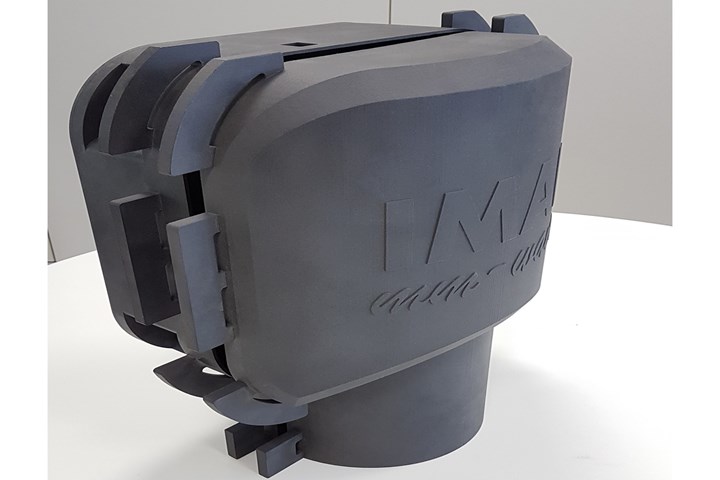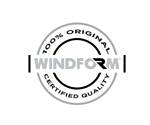CRP Technology produces composite sensor housing box
Commissioned by IMAL s.r.l., CRP applied its carbon fiber-reinforced Windform XT 2.0 material, which retains an 8% increase in tensile strength and 22% increase in tensile modulus.

Photo Credit: CRP Technology
It was recently reported that IMAL (Modena, Italy), a global company in machinery for the production of wood particle, plywood, MDF and OSB, commissioned a quality control system to be placed at the end of the production cycle, based on TeraHertz/millimeter wave (T-ray) technology. Rather than use its mass-produced sensor housing boxes, IMAL turned to CRP Technology (Modena, Italy) for the manufacturing of the functional sensor housing box.
According to CRP, the application had to be created in a short time and to combine high mechanical characteristics — resistance to acceleration, stress and heat — while maintaining a high level of aesthetic standards. CRP Technology chose the selective laser sintering process and the use of its proprietary carbon fiber-reinforced 3D printing material, Windform XT 2.0, which is has good mechanical properties and is suitable in demanding applications including motorsports, aerospace and unmanned aerial vehicle (UAV) sectors.
Replacing the previous formula of Windform XT in the Windform TOP-LINE family of composite materials, CRP says its features improvements in mechanical properties including an 8% increase in tensile strength, a 22% increase in tensile modulus and a 46% increase in elongation at break. Further, says CRP, the use of the Windform material enabled the box housing box to be electromagnetically shielded, an unexpected bonus to IMAL.
After an accurate analysis of the 3D and 2D files, CRP Technology says it created the functional 3D printed sensor housing box in two shells. A laser scan was performed on the finished part, and a control report drawn up for IMAL. To obtain higher feature tolerances, says CRP, the sensor housing box was CNC-machined on a five-axis machining center on specialized jigging.
According to CRP Technology, the application successfully passed the control and testing criteria, and fully complied with the requests and IMAL’s standards.
Related Content
-
Manufacturing the MFFD thermoplastic composite fuselage
Demonstrator’s upper, lower shells and assembly prove materials and new processes for lighter, cheaper and more sustainable high-rate future aircraft.
-
Active core molding: A new way to make composite parts
Koridion expandable material is combined with induction-heated molds to make high-quality, complex-shaped parts in minutes with 40% less material and 90% less energy, unlocking new possibilities in design and production.
-
Plant tour: Joby Aviation, Marina, Calif., U.S.
As the advanced air mobility market begins to take shape, market leader Joby Aviation works to industrialize composites manufacturing for its first-generation, composites-intensive, all-electric air taxi.















